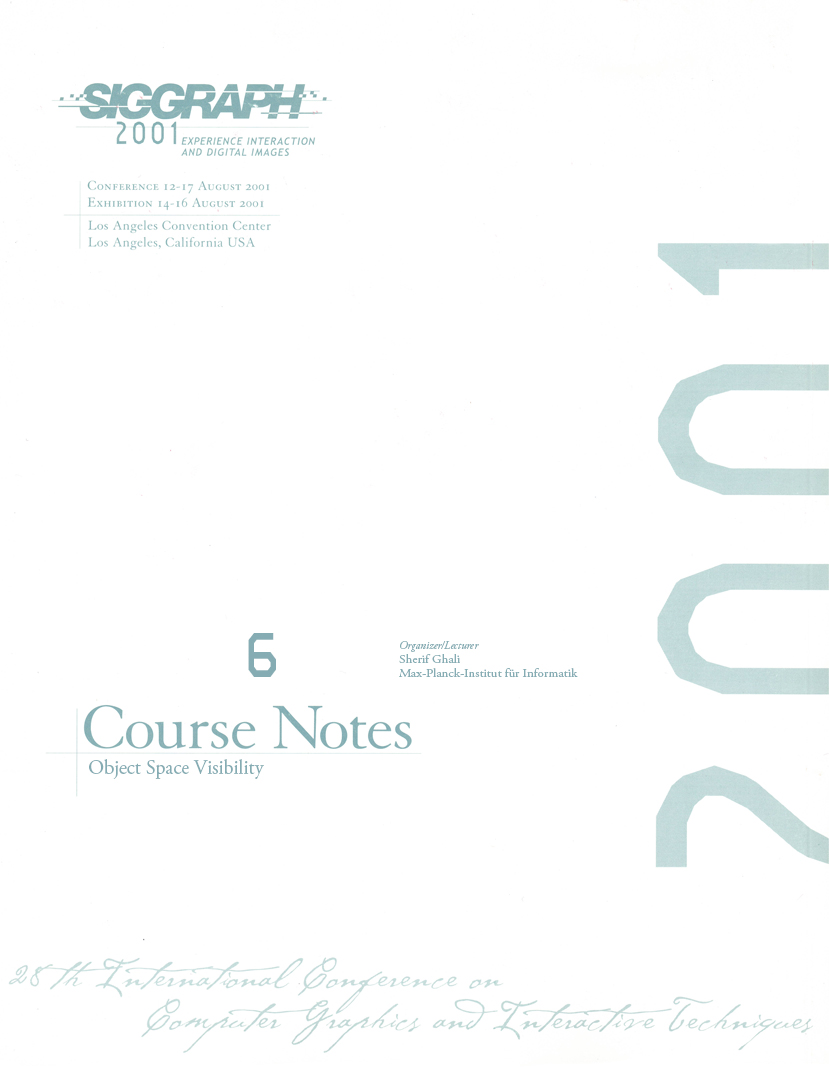“Object Space Visibility” by Ghali
Conference:
Type(s):
Entry Number: 06
Title:
- Object Space Visibility
Course Organizer(s):
Presenter(s)/Author(s):
Abstract:
Prerequisites
Familiarity with standard visibility techniques in computer graphics such as scanline rendering and binary space partitioning. Completion of the equivalent of a third-year course on analysis of algorithms in a standard computer science curriculum. Also helpful: a basic foundation in object-oriented terminology and concepts.
Topics
Definition of and the need of object-space computation. Visibility in flatland (in 2D). Visibility in space compared with visibility in the plane. Lines, conics, and quadrics in Euclidean space. Survey of algorithms for visible line determination, visible surface determination, and computation of the visibility map. Performance gap between practical and theoretical visibility algorithms. Research relevance: meshing for radiosity.
Description
A survey of object space since the first algorithm was introduced in 1963. In recent years, object-space computation has been considered an esoteric topic of only theoretical interest. But object-space algorithms solve problems, such as the ability to arbitrarily magnify output images, that otherwise require esoteric knowledge using raster-based techniques. By showing a number of problems and their relevance to mainstream and fundamental problems in computer graphics this tutorial stimulates revived interest in object-space computation.




